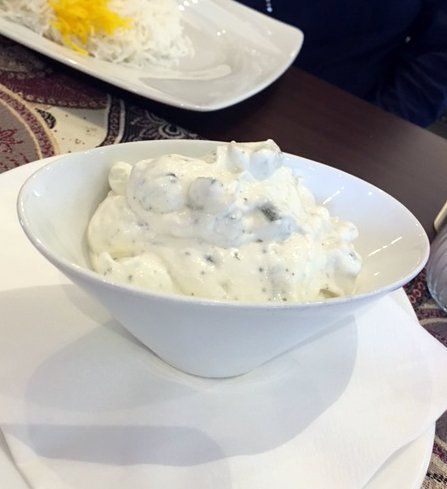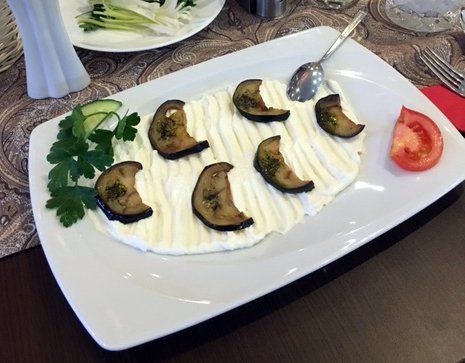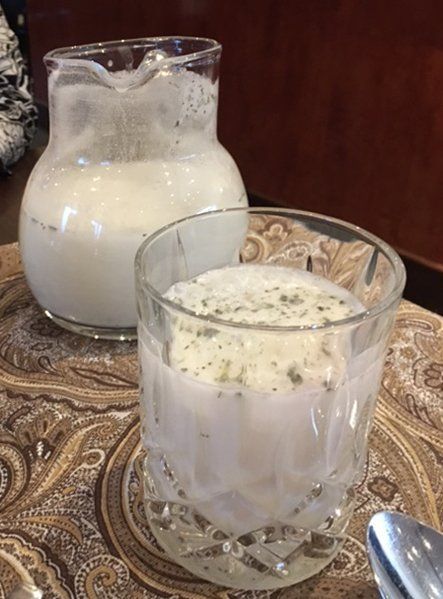Persian cuisine
Traditional cuisine of Iran and neighboring countries
Persian cuisine is based on Basmati fragrant rice, which is often refined with herbs, saffron or sweet and sour barberry berries. On the spit grilled lamb or beef, poultry or fish is served.
When the rice is served, a small amount of rice mixed with bright yellow saffron is mixed in the middle. If you do not have a dish with a sauce, you get on your plate a portion of butter, which will be placed on top of the saffron rice. Slowly melting it gives a pleasant taste to the rice.
You willl also find some pieces of sliced raw onion: You eat it together with the meat.
The grilled dishes are complemented by grilled tomatoes, herbs and specially prepared yoghurt. Spices such as cinnamon, saffron, sumac and turmeric, fruits and walnuts provide an exotic variety of flavors, but always well-balanced. Often limes give a fine refreshing acidity to the dishes.
The spice sumach is rather unknown in the German kitchen. It stands in a glass bowl on every restaurant table. Spread on meat, it gives a fine, slightly sour taste that's typical of some Persian dishes.
Desserts are often made with dates, pistachios or rose water. Saffron ice cream, pasta or rice pudding are also popular. At the end of every Persian menu, you can drink a good black tea.
A few dishes of our menu, more specifically ...

Copyright 2023-2026 - Restaurant Persia Erlangen
Pickled green olives - spicy
Creamy yoghurt with cucumber pieces

Copyright 2023-2026 - Restaurant Persia Erlangen

Copyright 2023-2026 - Restaurant Persia Erlangen
Sheep cheese with walnuts and herbs
Creamy yogurt with wild garlic

Copyright 2023-2026 - Restaurant Persia Erlangen

Copyright 2023-2026 - Restaurant Persia Erlangen
Creamy yogurt with fresh eggplant
Dough - Persian yoghurt drink

Copyright 2023-2026 - Restaurant Persia Erlangen

Copyright 2023-2026 - Restaurant Persia Erlangen
Saffron ice cream with pistachios
Lime sorbet

Copyright 2023-2026 - Restaurant Persia Erlangen
Great Persian holidays

Copyright 2023-2026 - Restaurant Persia Erlangen
Nouruz - The Persian New Year
Shab-e Yalda' - The longest night

Copyright 2023-2026 - Restaurant Persia Erlangen




